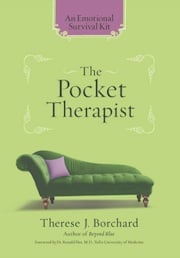
On the combox of my post “The Emotional Affair,” Beyond Blue reader Michael wrote:
I’m totally confused and caught up in this person. Some years go by without us speaking, but we always come back to each other. Convenience, you say, or possibly hoping for the best. I don’t now. The problem is that I’m hopelessly in love with this person and willing to give up all in every way there needs. But relationships are severely limited. You can justify anything in this world, especially the things you want most. The feeling of love is exceedingly strong and seductive, as is the feeling to be needed and to be loved. So I search spiritually, mentally …
If you read all the comments on the affair post and others like “12 Ways to End Addictive Relationships,” you might curse God for created romance. After all, it’s like a drug (quite literally with all the dopamine and oxytocin that infatuation dumps into our systems) that drives us to do crazy things, like drive across the country in diapers (remember… the astronaut?).
Because I’ve read so many tales of heartaches from Beyond Blue readers, and I want to know what, if anything, I should say, I studied Time Magazine’s special issue awhile back on love and chemistry. The science of romance is fascinating to me because for some susceptible people, the rush involved in new love mimics a good buzz from drugs. Addiction is born very easily in the body of a person who craves the ecstasy created by elevated levels of dopamine and oxytocin in our blood.
Let me excerpt some important paragraphs from Jeffrey Kluger’s article “Why We Love” for people like Michael so he can learn about the different places inside our brains those idealizations and love fantasies make and how they infect his blood with potentially dangerous chemicals:
Kluger writes:
The elaborate ritual of dating is how this screening [for premium genetic qualities] takes place. It’s when that process pays off–when you finally feel you’ve found the right person–that the true-love thrill hits, and studies of the brain with functional magnetic resonance imagers (fMRIs) show why it feels so good. The earliest fMRIs of brains in love were taken in 2000, and they revealed that the sensation of romance is processed in three areas.
Stop One: Ventral Tegmental (Dopamine)
The first is the ventral tegmental, a clump of tissue in the brain’s lower regions, which is the body’s central refinery for dopamine. Dopamine does a lot of jobs, but the thing we notice most is that it regulates reward. When you win a hand of poker, it’s a dopamine jolt that’s responsible for the thrill that follows. When you look forward to a big meal or expect a big raise, it’s a steady flow of dopamine that makes the anticipation such a pleasure.
[Helen Fisher, am anthropologist at Rutgers University and author of “Why We Love: The Nature and Chemistry of Romantic Love”] and her colleagues have conducted recent fMRI scans of people who are not just in love but newly in love and have found that their ventral tegmental areas are working particularly hard. “This little factory near the base of the brain is sending dopamine to higher regions,” she says. “It creates craving, motivation, goal-oriented behavior–and ecstasy.”
Stop Two: Nucleus Accumbens (Oxytocin)
Even with its intoxicating supply of dopamine, the ventral tegmental couldn’t do the love job on its own. Most people eventually do leave the poker game or the dinner table, after all. Something has to turn the exhilaration of a new partner into what can approach an obsession, and that something is the brain’s nucleus accumbens, located slightly higher and farther forward than the ventral tegmental. Thrill signals that start in the lower brain are processed in the nucleus accumbens via not just dopamine but also serotonin and, importantly, oxytocin. If ever there was a substance designed to bind, it’s oxytocin.
New mothers are flooded with the stuff during labor and nursing–one reason they connect so ferociously to their babies before they know them as anything more than a squirmy body and a hungry mouth. Live-in fathers whose partners are pregnant experience elevated oxytocin too, a good thing if they’re going to stick around through months of gestation and years of child-rearing. So powerful is oxytocin that a stranger who merely walks into its line of fire can suddenly seem appealing.
Stop Three: The Caudate Nuclei
The last major stops for love signals in the brain are the caudate nuclei, a pair of structures on either side of the head, each about the size of a shrimp. It’s here that patterns and mundane habits, such as knowing how to type and drive a car, are stored. Motor skills like those can be hard to lose, thanks to the caudate nuclei’s indelible memory. Apply the same permanence to love, and it’s no wonder that early passion can gel so quickly into enduring commitment. The idea that even one primal part of the brain is involved in processing love would be enough to make the feeling powerful. The fact that three are at work makes that powerful feeling consuming.
Kluger goes on to say that the problem with romance is that he can promote false expectations. “Any overwhelming emotional experience that ratchets up your sensory system can distort your perceptions, persuading you to take a chance on someone you should avoid,” he says.
The explanation behind bad love, or dangerous infatuation is grounded in biology–your body attributes feelings of well-being to the wrong source. Writes Kluger:
When hormones and natural opioids get activated, explains psychologist and sex researcher Jim Pfaus of Concordia University in Montreal, you start drawing connections to the person who was present when those good feelings were created. “You think someone made you feel good,” Pfaus says, “but really it’s your brain that made you feel good.”
In more cases than not, the love fever between two people breaks in time. Because, like any fever or intense emotion, it is unsustainable.
But sometimes the fever never cools. Sometimes people with fragile brain chemistry (There’s such a thing? Really?) get addicted to the feelings of well-being associated with a love partner. And I’d be willing to bet my allowance that many depressives belong to that group. Says Kluger:
Fisher sees the dangers of maladaptive love in fMRI studies she’s conducting of people who have been rejected by a lover and can’t shake the pain. In these subjects, as with all people in love, there is activity in the caudate nucleus, but it’s specifically in a part that’s adjacent to a brain region associated with addiction. If the two areas indeed overlap, as Fisher suspects, that helps explain why telling a jilted lover that it’s time to move on can be fruitless–as fruitless as admonishing a drunk to put a cork in the bottle.
For those people, there are books like Howard Halpern’s “How to Break Your Addiction to a Person,” that can be an excellent resource on how to give up a love interest, much like cigarettes or booze.
It’s also helpful to know that the typical relationship cannot maintain the passion index present at the start. And that the waning of that passion doesn’t mean you’ve chosen the wrong mate. Because, as Kluger says, “if partners are going to stay together for the years of care that children require, they need a love that bonds them to each other but without the passion that would be a distraction.” Therefore it’s necessary for committed couples to move from passion to “compassionate bonding,” a higher kind of love.
Kluger and his romance experts reassure couples that they’re doing just fine in their committed relationships even if they get distracted here and there by a brain fart (my term, not theirs), that by staying true to their vows, they are perhaps using the more evolved or sophisticated part of the human brain:
Nearly all relationships must settle and cool. That’s a hard truth, but it’s a comforting one too. Long for the heat of early love if you want, but you’d have to pay for it with the solidity you’ve built over the years.
* Click here to subscribe to Beyond Blue and click here to follow Therese on Twitter and click here to join Group Beyond Blue, a depression support group. Now stop clicking.

